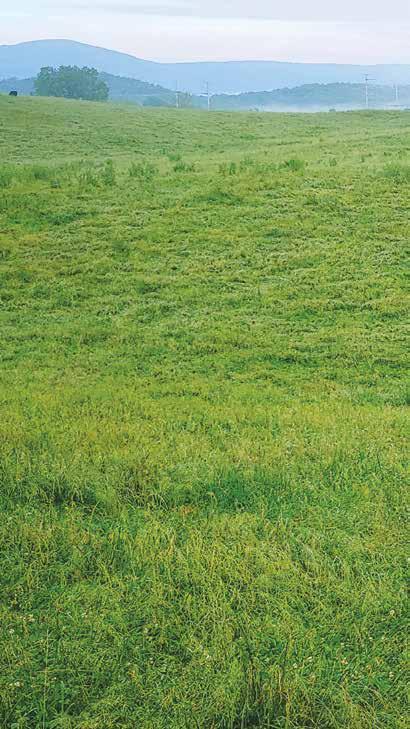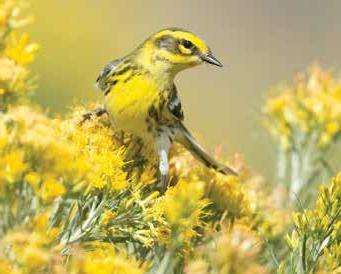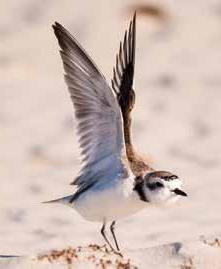ON the WIRE Western Bird Die-Offs Raise Alarm
E
xperts estimate that this summer, hundreds of thousands of birds may have suddenly died across New Mexico, Colorado, Arizona, and Texas, most of them migratory species such as swallows, warblers, and flycatchers. A record cold snap that started September 9 likely caused the majority of these deaths. While birds usually tolerate cold weather (feathers are excellent insulation, after all), cold leads to declines in insects and food shortages for insectivorous bird species. While sudden cold fronts have killed migratory birds before, scientists are concerned about the scale of this event, and they wonder if other factors might be in play. For example, before the cold snap, as early as August 20, unusually high numbers of dead birds were already turning up in parts of southern New Mexico. “The drivers behind these earlier events are less clear,” writes ABC’s Director of Threatened Species Outreach John C. Mittermeier in an article posted on ABC’s website. “They could be related to local factors, or to
the severe drought in the southwestern United States and the extensive wildfires across Oregon and California.” Forensic analyses of bird specimens may reveal if smoke inhalation from fires played a role. The severity of wildfires and droughts in the western U.S. have been exacerbated by climate change, and it may have played a role in increasing the impact of this year’s events. “Migratory birds traveling across the western U.S. this September faced record-breaking wildfires at the same time as the most severe drought in 1,200 years, at the same time as the most severe cold snap in over a century,” Mittermeier adds. “Alone, each of these factors presents a challenge for migrating birds. Together, it is easy to see how their impact could be particularly deadly.” Mittermeier also wonders how the bird deaths this summer might impact bird populations. “Research shows that die-offs of birds due to sudden weather events can lead to 25- to 90-percent declines in the number of breeding individuals the following year, and local populations can take up to seven years to recover from these events,” he writes. “If those populations are already declining due to habitat destruction, agricultural intensification, and increased pesticide use (as we know they are) and are already stressed by climate change-related events such
as droughts and fires, we can only imagine that those recoveries will be slower, if they happen at all.” Species with healthy populations are resilient to events such as this summer’s sudden cold snap, and there are clear steps that we can take to help birds maintain their populations. Fortunately, most of the birds found during the die-off are still widespread, generally common species. ABC continues to lead efforts to stop the declines in bird populations and to ensure that our birds are more resilient to climate change and weather events.
To find out more about ways to help, visit: bit.ly/ HelpReverseBirdDeclines Read John’s full article about the fall 2020 bird die-offs: bit.ly/ WesternBirdDieOff
LEFT: Townsend's Warbler by John C. Mittermeier TOP: Violet-green Swallow by Feng Yu, Shutterstock
6
B I R D CO N S E R V A TI ON | W I NTE R 2020-21





